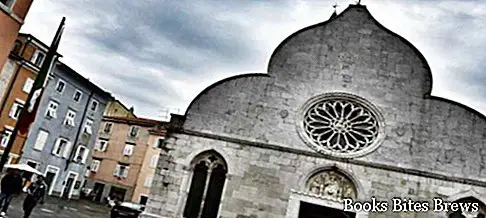What to see in Muggia, an itinerary including the main monuments and places of interest, including the Castle, the Church of Santa Maria Assunta, the Cathedral, the Church of San Francesco and the Town Hall.
Tourist information
Of Roman origin, Muggia was built on a hill situated in a panoramic position on the Gulf of Trieste, in the same point around which the present city has developed.
The town retains some interesting testimonies concerning its past, including the castle with the remains of the old walls and the church of Santa Maria Assunta dating back to the ninth century.
The interior of the church preserves some masterpieces, such as the reliefs made in the Lombard style, present in the enclosure of the presbytery area, the ambo sculptures and the fifteenth-century frescoes.
In 1420 Muggia passed under Venetian rule, this event led to a gradual absorption of the uses and customs of Venice, which can still be seen today in the local dialect, in the culinary traditions and in the architectural style of the buildings, with a clear imprint Venetian Gothic.
Among the main monuments and places of interest in Muggia, there is the Cathedral of Saints John and Paul, located in Piazza Marconi.
What see
The Cathedral dates back to the 1400s, although it appears to be mainly in the Gothic style, following the alterations it underwent in later periods.
The cathedral complex has an elegant facade, characterized by mullioned windows and rose window, with a beautiful bas-relief placed in the lunette above the portal and depicting the Trinity with the patron saints.
Next to the Duomo stands the Palazzo del Comune, a modern structure that still retains some elements of the previous building, which was of Venetian origins, including the Lion of San Marco, located on the main facade, and the ancient coats of arms of the Venetian podestàs, as well as to those of some noble families residing in Muggia.
In the historic center there is also the fifteenth-century Church of San Francesco, which houses two valuable altarpieces, depicting the fifteenth-century Madonna del Latte and the seventeenth-century Madonna della Cintola.
The Carnival of Muggia, which is one of the most characteristic of Friuli Venezia Giulia, is characterized by the fact that the floats and masks, the object of the parade, are owned by the various companies, which compete with each other to the sound of their own band musical.




